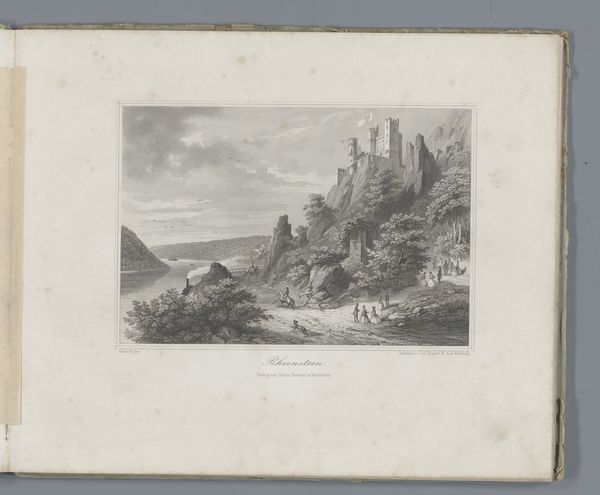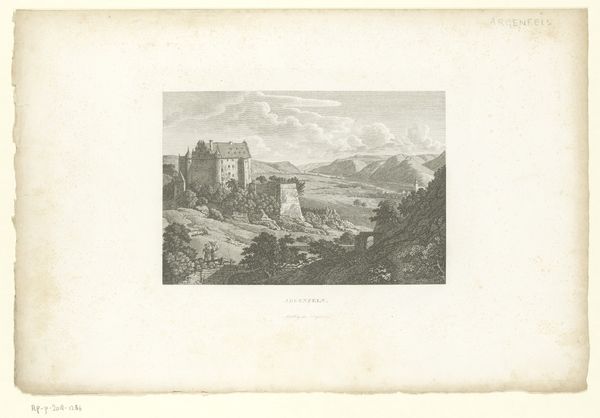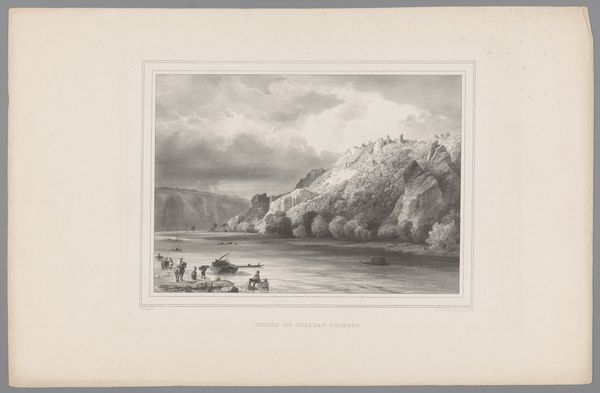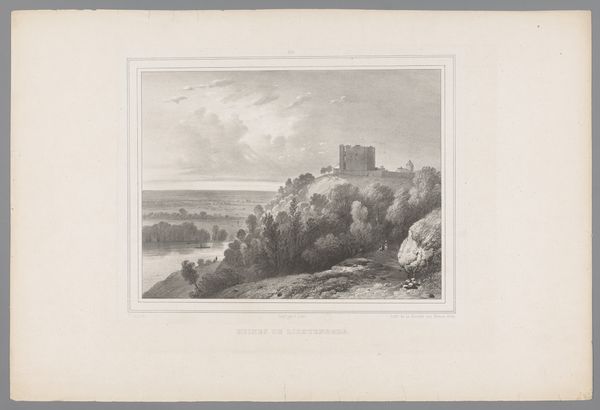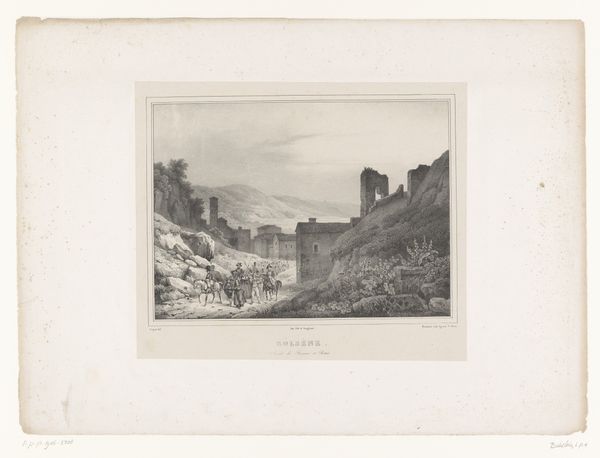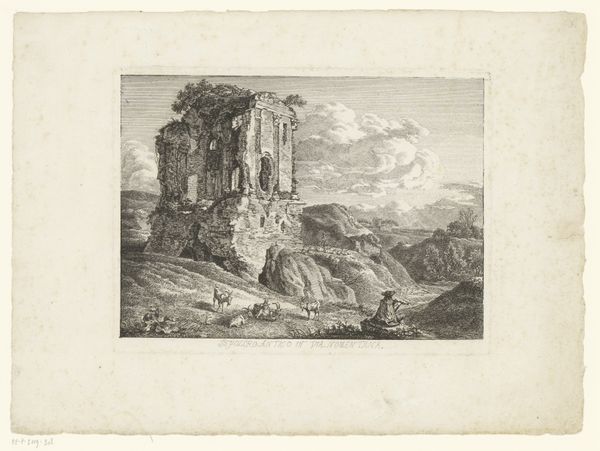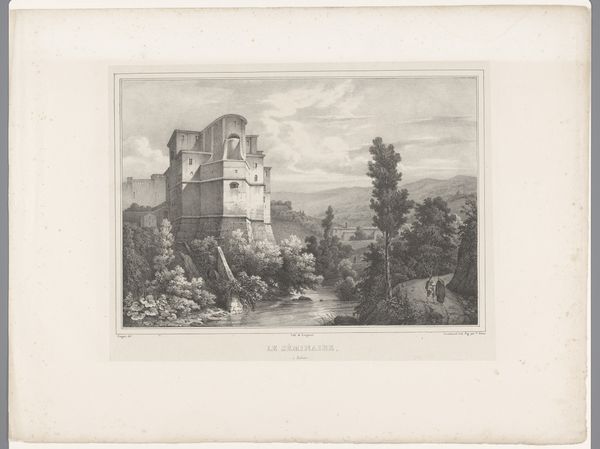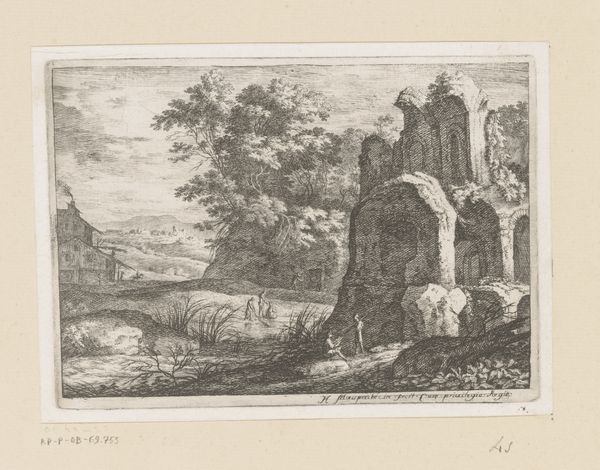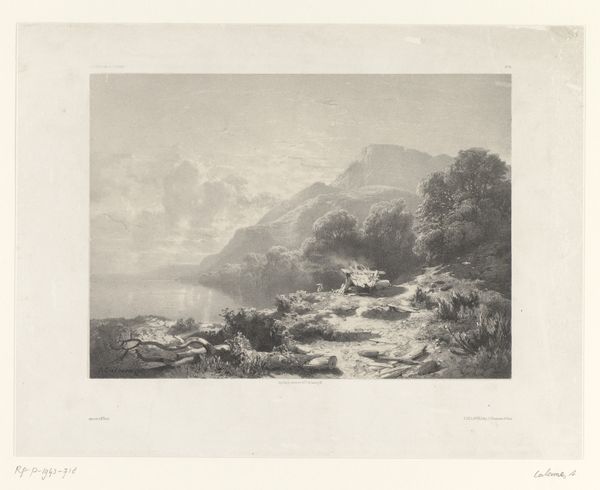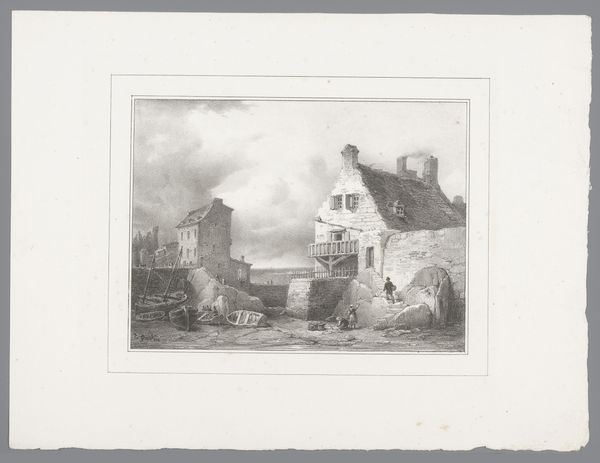
print, etching, engraving
# print
#
etching
#
landscape
#
romanticism
#
engraving
Dimensions: height 361 mm, width 553 mm
Copyright: Rijks Museum: Open Domain
Paulus Lauters made this work, ‘Hunter at the Ruins of Poilvache Castle,’ using lithography, a printmaking process that relies on the chemical repulsion of oil and water. The printing process begins with a flat stone or metal plate, traditionally limestone, on which the artist draws an image with a greasy crayon or ink. The surface is then treated with a chemical etch, making the image receptive to oil-based inks and the blank areas receptive to water. In printing, the stone is dampened, and then inked; the ink adheres only to the drawn image. Finally, paper is pressed against the surface, transferring the ink and creating the print. Lithography enabled the relatively quick and inexpensive reproduction of images, which democratized art and visual culture. This print, with its serene landscape and solitary figure, speaks to the 19th-century’s fascination with nature, history, and the individual's place within them. The lithographic process, with its blend of artistic skill and chemical technique, bridges the gap between craft and industry.
Comments
No comments
Be the first to comment and join the conversation on the ultimate creative platform.
